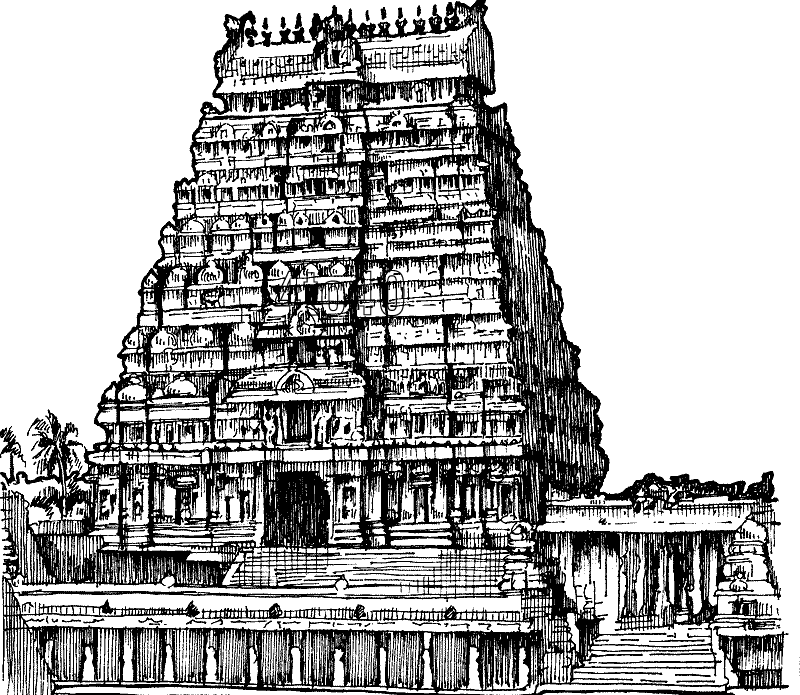LALITHA SAHASRANAMAM
@ S. Subramaniam

शन्तिमती (131)
Shantimati (131)
Meaning:
To her devotees, Devi is peace personified.
Interpretation:
The word Shanti is very simple and as we all know, it refers to Peace. Mati (in the form) is added to it to indicate that Devi is the manifestation of Peace or we can also say Devi is peace Herself.

It can further be elaborated that Devi is never harsh to Her devotees. She is their eternal Mother, showers affection on them and always appears to be peaceful.
Devi also bestows all good qualities such as bravery, wisdom, knowledge, compassion, materialistic prosperity to her devotees and in the process she also provides peace to them
Adi Shankara adressing Devi as Shanti
While describing Devi as embodiment as well as provider of peace at several places in his various compositions, Adi Shankara has not specifically referred to Devi as Shantimati in Soundarya Lahari.

Brahma Jnanavali Mala is a precious gift by Shri Adi Shankara meant for the advanced level of Sadhaka to obtain liberation. Devi Upasakas who have already realized the goal of Advaita (non- duality) and identified that they are themselves Brahman, only can chant this sloka.
प्रत्यक्चैतन्यरूपोऽहं शान्तोऽहं प्रकृतेः परः ।
शाश्वतानन्दरूपोऽहमहमेवाहमव्ययः ॥ ६॥
Pratyak Chaitanya Rūlupo Ahaṃ Shanto Ahaṃ Prakṛteḥ Paraḥ .
Shasvat Ananda Rupo Ahama Ahameva Ahamavyayaḥ .. 6..
I am the indwelling consciousness, I am calm (free from all agitation), I am beyond prakrti (Maya), I am of the nature of eternal bliss, I am the very Self, indestructible and changeless.
Sai Bhajan

One of the most absorbing Sai Bhajans, regularly sung at Prashanti Nilayam, Puttaparthi is Shanta Durge Shanta Swaroopini.. Those interested can watch it on YouTube in the link provided here:
Author's Notes:
Looking for the origin of the word Shanti I found this interesting hymn from Yajur Veda in which the word Shanti appears a dozen times:

ॐ द्यौ: शान्तिरन्तरिक्षं शान्ति: पृथिवी शान्तिराप: शान्तिरोषधय: शान्ति: वनस्पतय: शान्तिर्विश्वेदेवा: शान्तिर्ब्रह्म शान्ति: सर्वं शान्ति:, शान्तिरेव शान्ति: सा मा शान्तिरेधि ॥
Om Dyouh Shanti, Anthariksha Shanti Prithvi Shanti Aapa Shanti Aushada Shanti Vanaspataya Shanti Vishwedeva Shanti Brahma Shanti Sarva Shanti Eva Shanti Sa ma Shantir Edhi.
Meaning:
Om - Let there be Peace is in the Sky; in the Space (between Earth and Sky); on Earth; in the Waters; in Medicinal herbs, in Trees in forest; in Gods who reside in various elements of Nature and in Brahman (the Consciousness); Let Peace pervade everywhere; in all directions. May you ensure that Peace makes our life fulfilled.
Chanting of Shanti three times : Om Shanti: Shanti: Shanti:
It is a common practice to chant the holy mantra Shanti three times after the conclusion of prayers. Why three times?

There are three types of Ashanti (opposite of peace) and in order to remove them, the word Shanti is chanted three times. The three types of Ashanti are: Adhidaivika (ashanti of divine origin), Adhibhautika (ashanti from material world) and Adhyatmika (ashanti created by ourselves). By chanting Om Shanti three times we get rid of these ashanti-s and seek Peace.
Om Shanti Shanti Shanti:
Disclaimer: All matters contained in this article are the property of www.templesofasia.com. The opinions expressed in this article are purely that of the author. The author alone is responsible for the accuracy, authenticity, completeness and validity of all the information in the article.


Comments